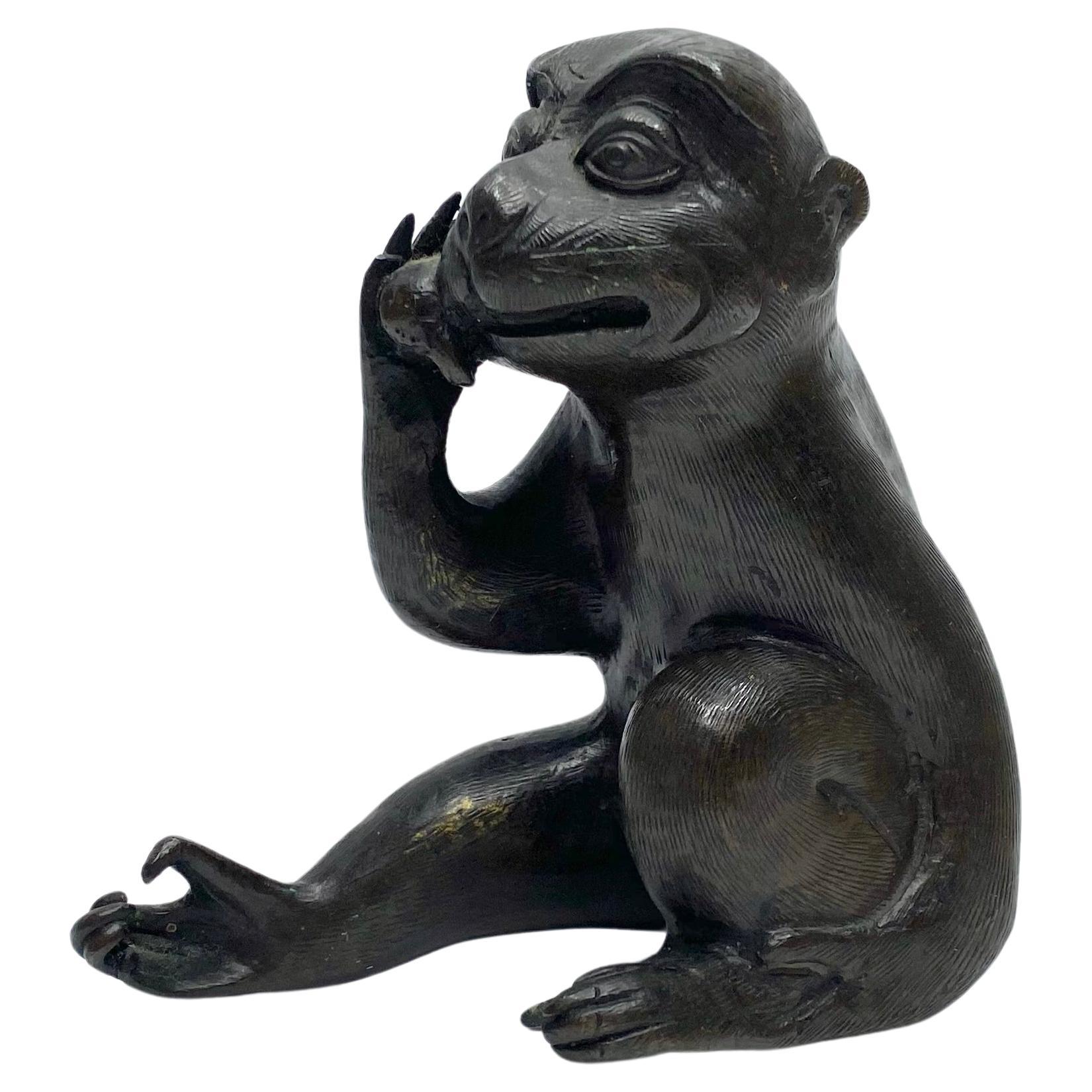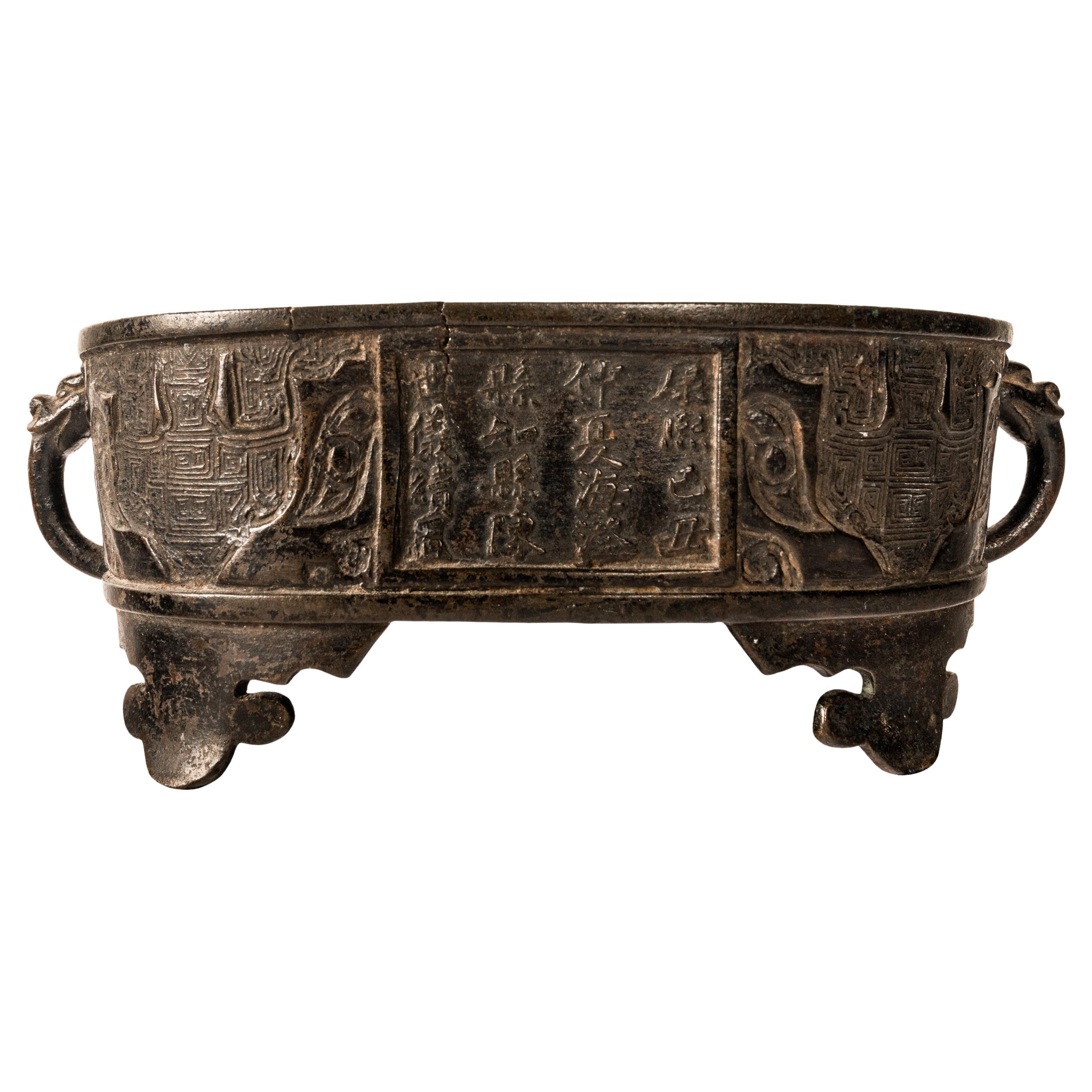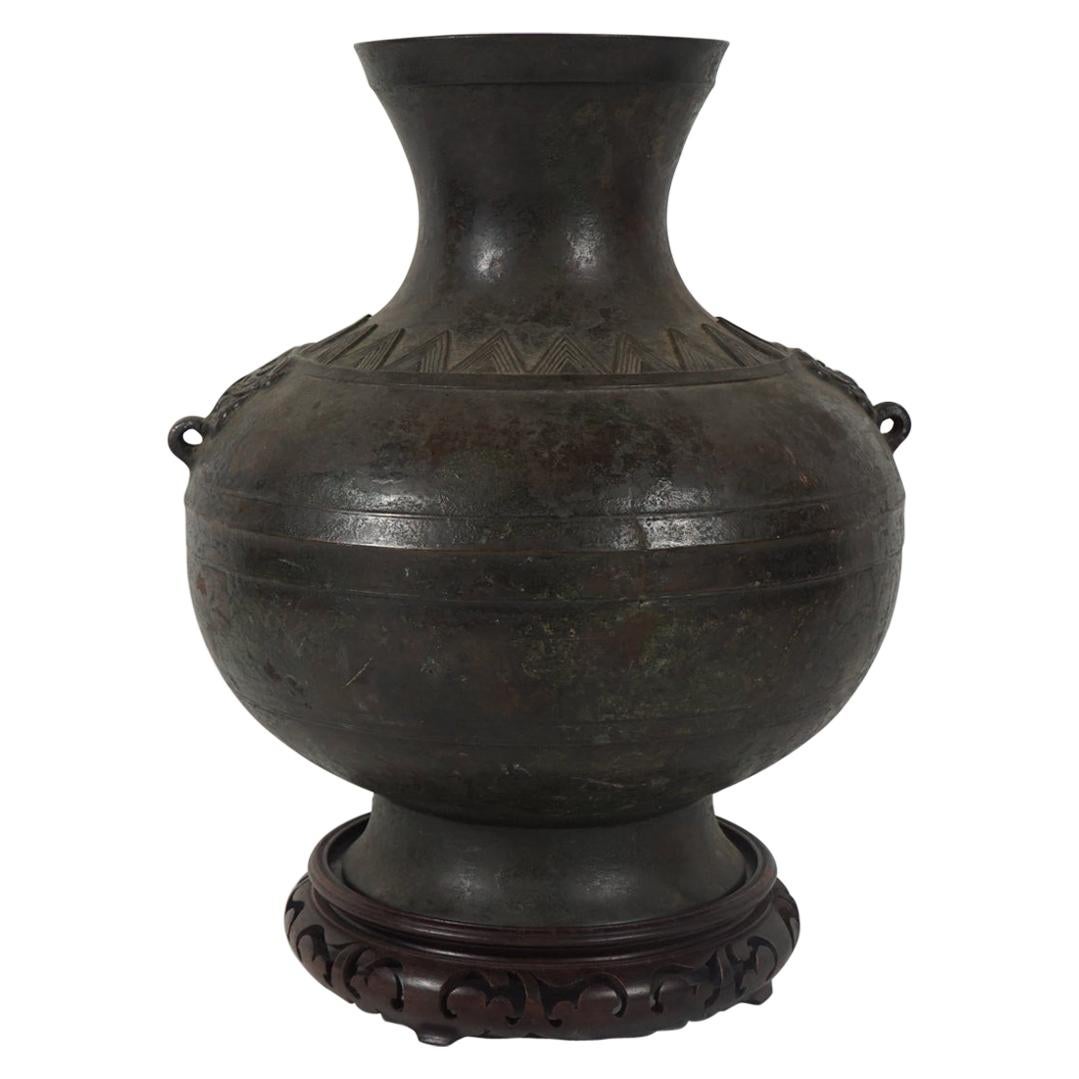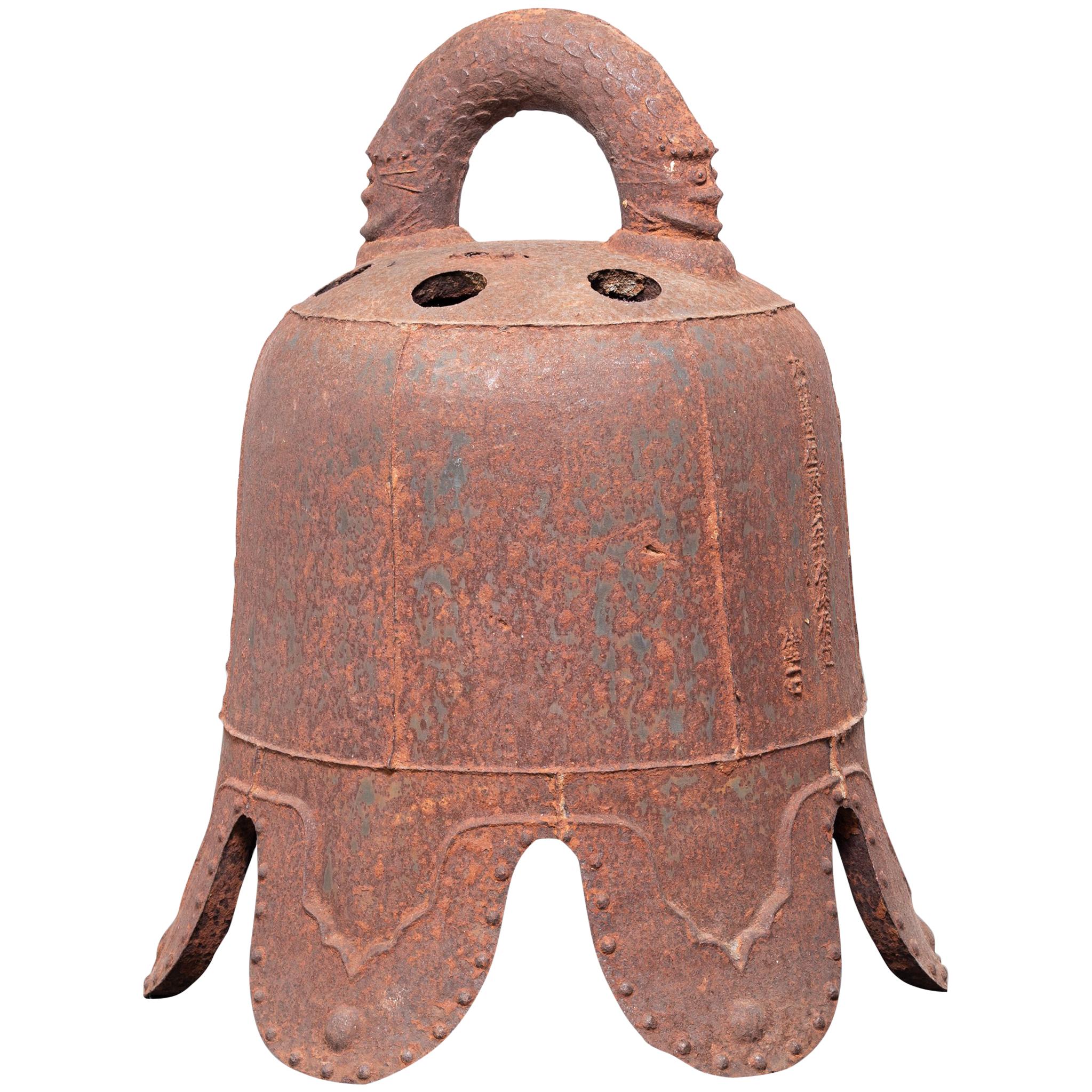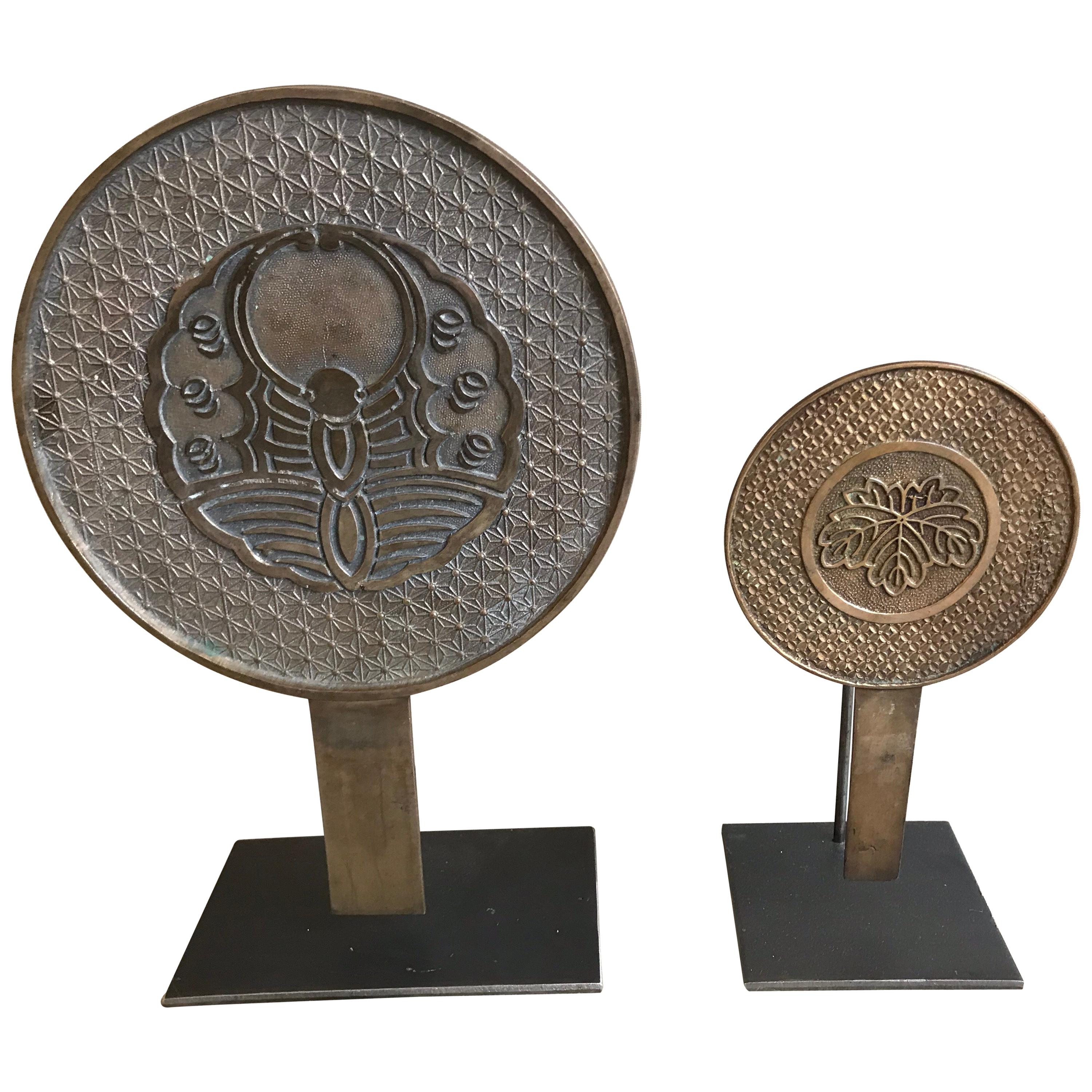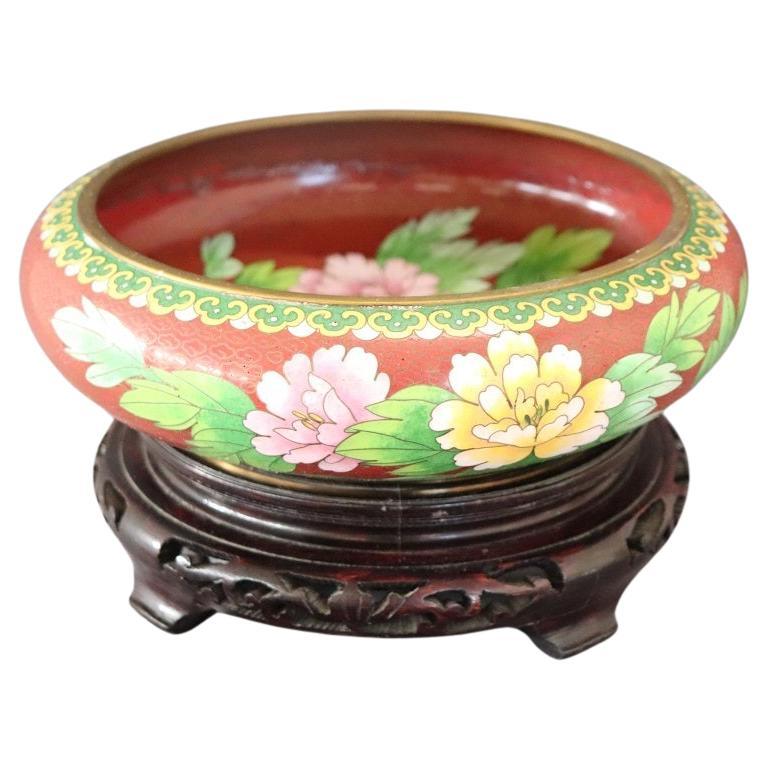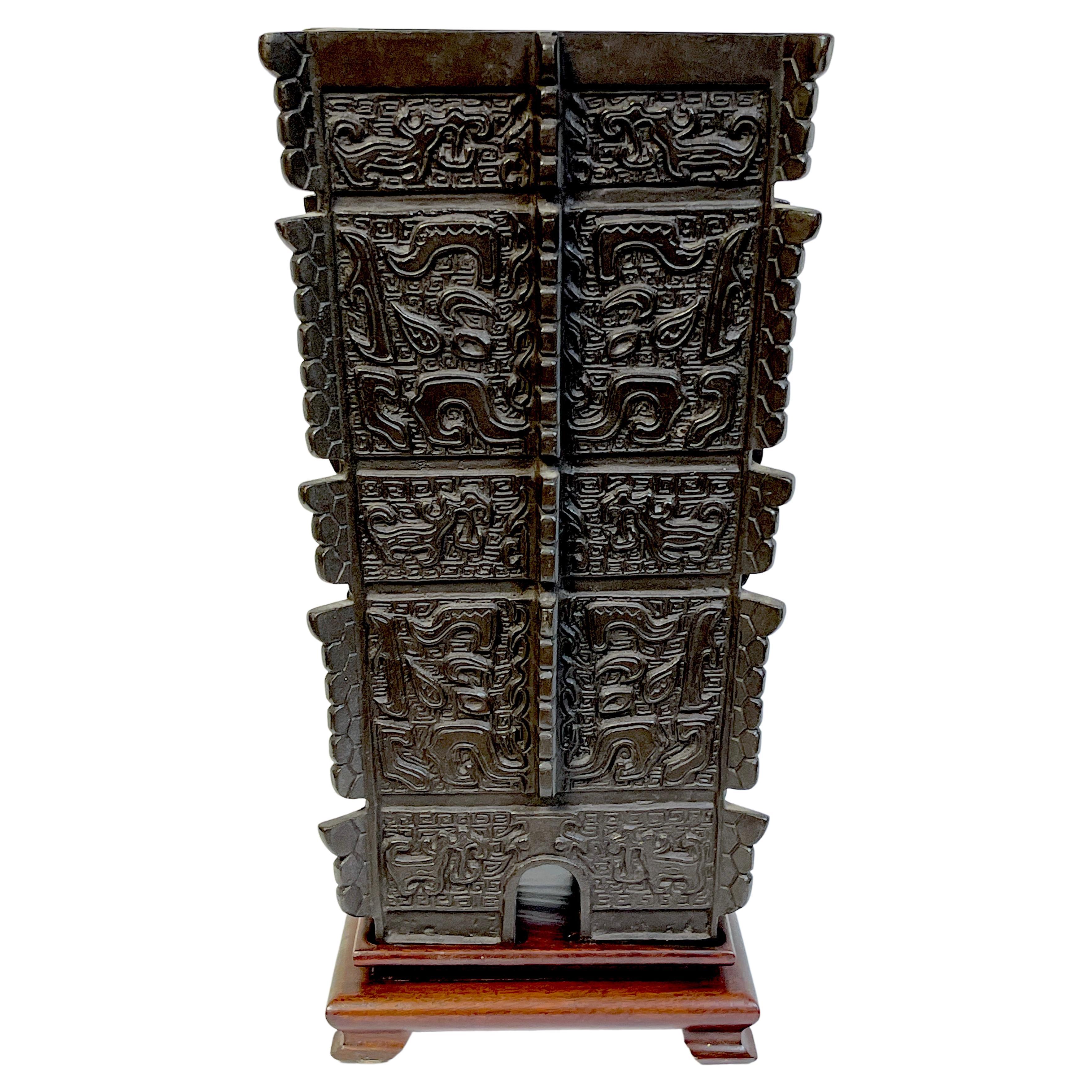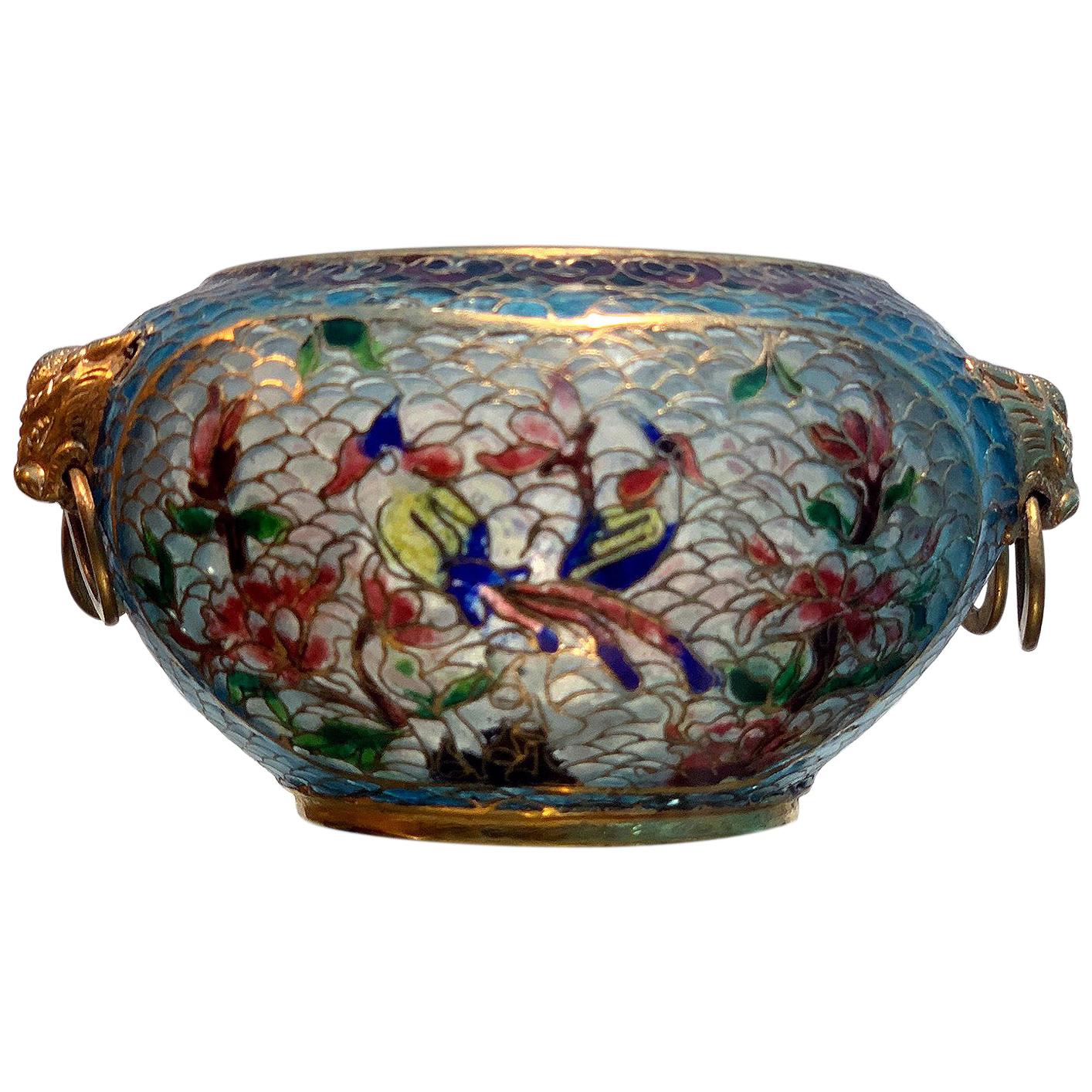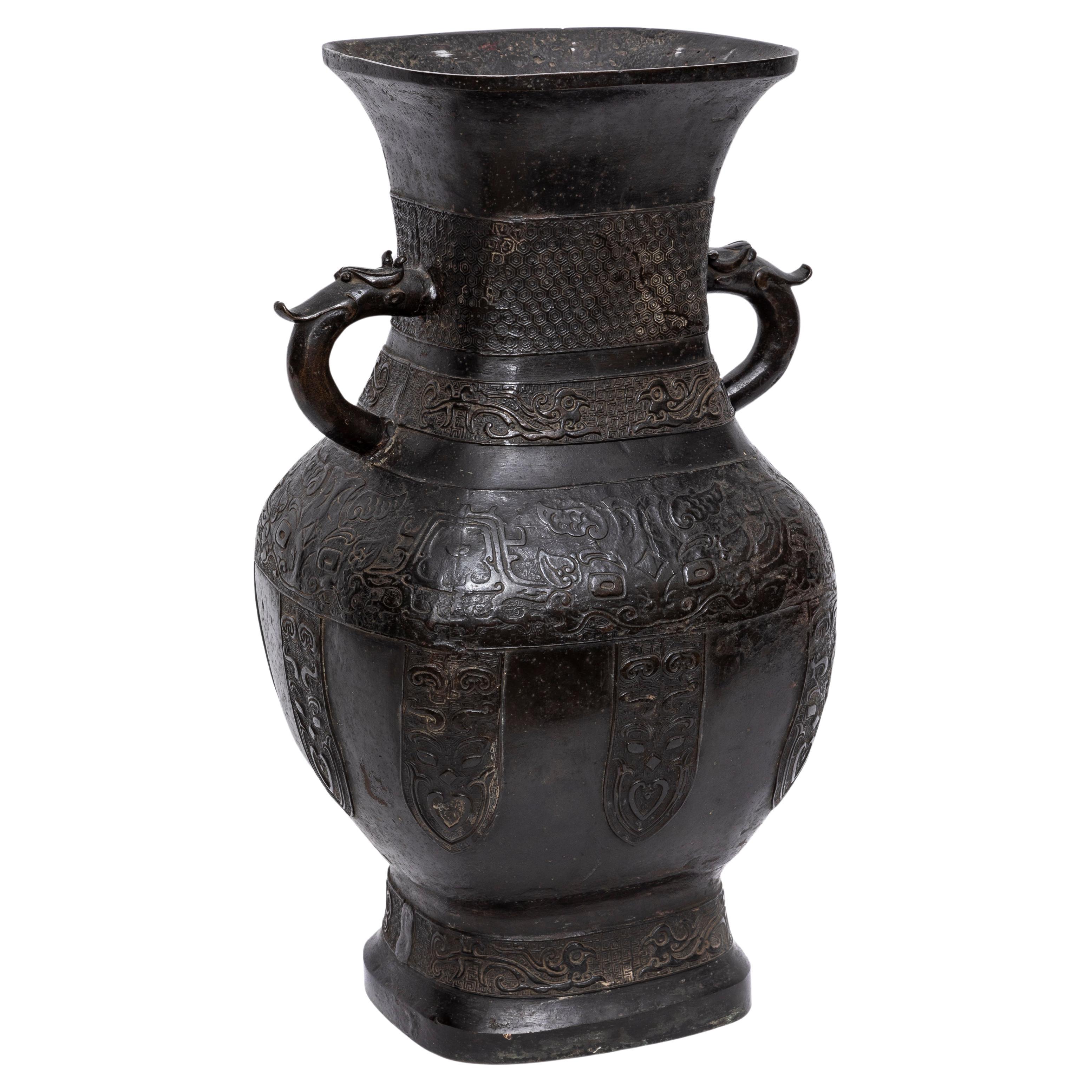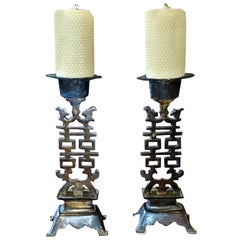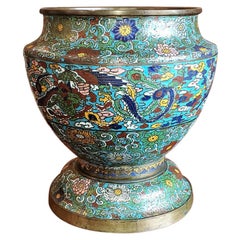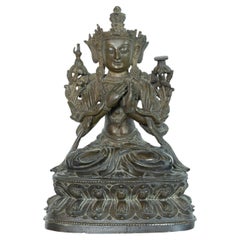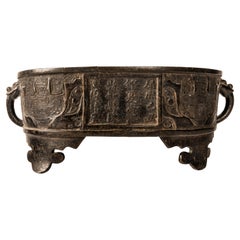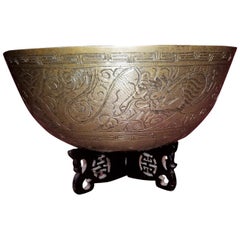
Ming Style Chinese Bronze Bowl on Stand
View Similar Items
Want more images or videos?
Request additional images or videos from the seller
1 of 15
Ming Style Chinese Bronze Bowl on Stand
About the Item
- Dimensions:Height: 7.5 in (19.05 cm)Width: 12.2 in (30.99 cm)Depth: 12.2 in (30.99 cm)
- Style:Ming (In the Style Of)
- Materials and Techniques:
- Place of Origin:
- Period:
- Date of Manufacture:1920
- Condition:Wear consistent with age and use. Minor structural damages. Bowl slightly warped.
- Seller Location:Dallas, TX
- Reference Number:1stDibs: LU3978112158893
About the Seller
4.9
Gold Seller
These expertly vetted sellers are highly rated and consistently exceed customer expectations.
Established in 2015
1stDibs seller since 2018
349 sales on 1stDibs
More From This SellerView All
- Large Oriental Champleve Cloisonne Urn on StandLocated in Dallas, TXPresenting a beautiful and very high quality large oriental champlevé cloisonné urn on stand. Late 19th or early 20th century, circa 1890-1910. Pro...Category
Early 20th Century Japanese Japonisme Metalwork
MaterialsBrass, Bronze, Enamel
- Vintage Chinese Double Happiness Wedding CandlesticksLocated in Dallas, TXPresenting a lovely vintage Chinese double happiness wedding candlesticks, a matching pair. Made in China in the early 20th century of bronzed pewt...Category
Early 20th Century Chinese Archaistic Metalwork
MaterialsPewter
- Japanese Meiji Champleve and Bronze UrnLocated in Dallas, TXPresenting a gorgeous Japanese Meiji Champleve and bronze urn. Made in Japan during the Meiji Period circa 1880. The body of ...Category
Antique Late 19th Century Japanese Meiji Metalwork
MaterialsBronze, Enamel
- Antique Indian Dhokra Horse and Rider SculptureLocated in Dallas, TXPresenting a lovely antique Indian Dhokra horse and rider sculpture. Probably from the late 19th or early 20th century as is evidenced by its natural patina and clear evidence of age. It depicts an Indian Warrior with a sword in his right hand mounted on his horse/steed. The warrior is in classical and ancient Southeast Asian Indian attire and he holds the horse’s reins in his left hand. The body of the horse is a series of lines (in the Classic Dhokra Style) and it has a tribal headdress...Category
Antique Late 19th Century Indian Anglo Raj Metalwork
MaterialsMetal
- Japanese Meiji Period Sterling Silver 2 Handled Basket by Katsu MiyamotoBy Miyamoto Shoko 1Located in Dallas, TXPRESENTING a GORGEOUS, VERY HIGH QUALITY and EXTREMELY RARE piece of Japanese Meiji Period Sterling Silver 2 Handled Basket by Katsu Miyamoto. EXQUISITE, EXCEPTIONAL, RARE & IMPORTANT! This is definitely a Meiji Period piece due to the fact that it is marked with the sterling silver mark “jungin”. The Meiji period was from 1868 to 1912 and in 1928 a law was introduced in Japan compelling the use of decimal marks for silver. This pre-dates that decimalization law. We are of the opinion that it is from circa 1900. Miyamoto Shoko was founded in 1880 as the first silverware specialty shop. In 1899, Miyamoto Shoko’s silverwares were ordered by the family members of the Emperor of Japan, and to this day, they are making fine and graceful handicrafts with skillful craftsmen. Loved by numerous customers since the Meiji era, Miyamoto Shoko’s products have also been given to Princess Mako and Princess Kako of Akishino, as well as Princess Aiko Toshinomiya, on their birthdays. Katsu Miyamoto (宮本勝), in 1880, in order to increase the sales of tobacco and cigarettes to foreigners founded the Moyamoto Shoko company, which produced different silverwares in general and particularly silver cigarette cases. Miyamoto’s first name, Katsu (勝) in some sources is written as “Masaru”, since 勝 kanji can be pronounced in both ways. This basket is of the HIGHEST QUALITY imaginable! The top of the basket has the MOST GORGEOUS repousse work of flowers, probably lotus flowers, with leaves and foliage. It has an underlying chevron effect chasing, reflecting parquetry. The 2 handles are cast in the form of bamboo handles. The rim of the top likewise is cast as bamboo. The base is equally stunning in a different way! It is chased with a chevron effect, like parquetry flooring and the four feet simulate pieces of sliced bamboo with an interlinking gallery of support columns, likewise, simulating bamboo. The QUALITY of WORKMANSHIP is OUTSTANDING! The pieces weighs exactly 525 grams. This piece takes my breath away! This is one for the SERIOUS COLLECTOR of EXQUISITE AND RARE Japanese silver. You will not find another like it, for sale ANYWHERE ELSE IN THE WORLD …… I know as I have searched! Provenance: Acquired from a Dallas Private Collector. Dimensions: 9.6 inches wide, 7.6 inches deep and 2.75 inches tall ( 7.25 inches tall with handles up) Condition: Very good. It looks like the base 4 legged gallery, has been repaired/re-attached to the base, but otherwise it is excellent and of Museum quality. The Meiji period (明治時代 Meiji-jidai?), also known as the Meiji era, is a Japanese era which extended from October 23, 1868 through July 30, 1912.[1] This period represents the first half of the Empire of Japan during which Japanese society moved from being an isolated feudal society to its modern form. Fundamental changes affected its social structure, internal politics, economy, military, and foreign relations. The period corresponded with the reign of Emperor Meiji after 1868, and lasted until his death in 1912. It was succeeded by the Taishō period upon the accession of Emperor Taishō to the throne. Solid silver pieces...Category
Early 20th Century Japanese Meiji Metalwork
MaterialsSterling Silver
- Early 20th Century Gilt Metal Thai Khon DancerLocated in Dallas, TXPresenting a beautiful early 20th century Gilt Metal Thai Khon Dancer. Made in Thailand (South East Asia) circa 1920. It features a gilt meta...Category
Early 20th Century Thai Country Sculptures and Carvings
MaterialsMetal
You May Also Like
- Chinese bronze Monkey, 17th Century, Ming Dynasty.Located in Gargrave, North YorkshireChinese bronze figure of a Monkey, 17th Century, Ming Dynasty. The amusing study, cast as a seated monkey, about to devour a peach, held in his right hand. His hair well delineated, ...Category
Antique 17th Century Chinese Ming Metalwork
MaterialsBronze
- Chinese Ming Dynasty Bronze Buddha of the future MaitreyaLocated in San Francisco, CAChinese Ming Dynasty period bronze figure of Bodhisattva of the future - Maitreya. It is beautifully modeled in fine details typical of high-quality casting done in the Ming dynasty ...Category
Antique 17th Century Chinese Ming Metalwork
MaterialsBronze
- Antique Archaic Zhou Dynasty Style Chinese Bronze Censer Incense Burner MingLocated in Portland, ORA good antique Chinese Zhou dynasty style archaistic bronze censer, incense burner. This cast bronze censer is in the archaic Zhou dynasty style, but believed to be more likely from ...Category
Antique 17th Century Chinese Archaistic Metalwork
MaterialsBronze
- Ming Dynasty Period Cast Bronze Hue Shaped Urn in an Archaist StyleLocated in Hudson, NYThis fine old urn cast as an honorific nod to the ancient past of China was made circa 1600-1650. The shape or Hue was a common and well-represented form in the Han dynasty in pottery and bronze. This urn shows thin casting to the walls with incorporated toe tia or facial masks...Category
Antique Mid-17th Century Chinese Ming Metalwork
MaterialsBronze
- Chinese Ming Iron Bell with Dragon Handle, c. 1600Located in Chicago, ILThis monumental Ming-dynasty bell once pealed in a Chinese village, sounding out in celebration or giving notice of important events. Expertly forged, the cast-iron bell is detailed with characters in intricate relief, and its exaggerated scallop rim is traced with oversized rivets. Covered in scales and ending in expressive faces, the bell's handle is cast in the form of a two-headed hong dragon, thought to be the embodiment of a rainbow and thus visible only after rainfall. Frosted with snow or lit from within by flickering candles, this sculptural bell takes on a magical presence in the winter garden.Category
Antique Early 17th Century Chinese Ming Garden Ornaments
MaterialsIron
- Japanese Bronze Mirrors on StandsLocated in Chicago, ILThis is a pair of Japanese decorative bronze mirrors from late 1800-1900 They are mounted on steel stands to display they’re beauty.Category
Antique Late 19th Century Japanese Metalwork
MaterialsBronze
$795 / set
Recently Viewed
View AllMore Ways To Browse
Antique Chinese Bronze Marks
Antique Chinese Bronze Bowl
Ming Rosewood
Chinese Rosewood Floral
Brass Bowl China
Chinese Brass Bowl
Ming Dynasty Bowl
Chinese Ming Style Rosewood
Bronze Animal With Bowl
Mark Godwin
Antique Brass Bowl China
Antique Chinese Brass Bowl
Antique Metalwork
Japanese 19th Bronze
19th Century Japanese Bronze
Bronze Meiji Furniture
Meiji Bronze
Japanese Bronze Meiji
